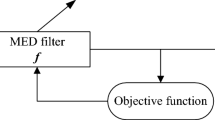Abstract
In the conventional sucker rod pumping system, the pumping unit often be produced many types of faults that due to the influence of sucker rod, pump, and other accessories, as well as oil well paraffinication, gas interference, sand production and other environmental impacts. Using indicator diagram to analyze the fault diagnosis of pumping units is a common method. In this paper, a lightweight model was designed based on the classical convolutional neural network, and a comparative experiment was used to optimize the model from four perspectives: learning rate, convolution kernel size, batch size, and optimization algorithm. Finally, the average accuracy achieved 95.5%.

















Similar content being viewed by others
References
S.A. Mahmoud, A.S. El-Tabei, S.H. Bendary, Petroleum waste as raw materials for production of electricity by photogalvanic solar cell. J. Mol. Struct. 1243, 130764 (2021)
H. Qin, Z. Han, Stochastic resource allocation for well control with digital oil field infrastructure. IEEE Syst. J. 12, 1295–1306 (2018)
N.Y.Z. Liu, Y.Q. Wang, Q. Bai et al., Road life-cycle carbon dioxide emissions and emission reduction technologies: a review. J. Traffic Transp. Eng. (Engl. Ed.). 9, 532–555 (2022)
G. Takács, A critical analysis of power conditions in sucker-rod pumping systems. J. Petrol. Sci. Eng. 210, 110061 (2022)
K. Zhang, Q. Wang, L.B. Wang et al., Fault diagnosis method for sucker rod well with few shots based on meta-transfer learning. J. Pet. Sci. Eng. 212, 110295 (2022)
Y.F. He, Z.L. Wang, B. Liu et al., Intelligent recognition method of insufficient fluid supply of oil well based on convolutional neural network. Open J. Yangtze Oil Gas. 6, 116–128 (2021)
G.O. Strawn, Masterminds of deep learning. IT Prof. 24, 13–15 (2022)
X.D. Hao, L. Sun, J.L. Chi et al., Off-design performance of 9f gas turbine based on gproms and bp neural network model. J. Therm. Sci. 31022, 261–272 (2022)
R. Abdalla, A.E. Mahmoud, A. El-Banbi, Identification of downhole conditions in sucker rod pumped wells using deep neural networks and genetic algorithms. SPE Prod. Oper. 35, 435–447 (2020)
A. Krizhevsky, I. Sutskever, G.E. Hinton, Imagenet classification with deep convolutional neural networks. Commun. ACM. 25, 84–90 (2017)
J.H. Liu, K.H. Lim, K.L. Wood et al., Hybrid quantum-classical convolutional neural networks. Sci. China Phys. Mech. Astron. 64, 290311 (2021)
Y.X. Duan, Y. Li, Q.F. Sun, et al. Improved alexnet model and using in dynamometer card classification. Comput. Appl. Softw. 35, 226–230, 272 (2018)
J. Du, Z.G. Liu, K.P. Song et al., Fault diagnosis of pumping unit based on convolutional neural network. J. Univ. Electron. Sci. Technol. China. 49, 751–757 (2020)
A.H. Ye, Research on Diagnosis Technology of Indicator Diagram Based on Deep Learning. (Beijing University of Posts and Telecommunications, Beijing, 2021)
I. Singh, G. Goyal, A. Chandel, Alexnet architecture based convolutional neural network for toxic comments classification. J. King Saud Univ. Comput. Inf. Sci. 34, 7547–7558 (2022)
C.D. Tan, Z.M. Feng, X.L. Liu et al., Review of variable speed drive technology in beam pumping units for energy-saving. Energy Rep. 6, 2676–2688 (2020)
Z.M. Feng, C. Guo, D. Zhang et al., Variable speed drive optimization model and analysis of comprehensive performance of beam pumping unit. J. Petrol. Sci. Eng. 191, 107155 (2020)
B. Zhang, X.W. Gao, X.Y. Li, Complete simulation and fault diagnosis of sucker-rod pumping (includes associated comment). SPE Prod. Oper. 36, 277–290 (2021)
C.H. Song, S. Liu, G.J. Han et al., Edge intelligence based condition monitoring of beam pumping units under heavy noise in the industrial internet of things for industry 4.0. IEEE Internet Things J. 10, 1 (2022)
J.X. Jiang, X.F. Li, Identification of indicator diagram type in the oil well by bp neural network. IOP Conf. Ser.: Earth Environ. Sci. 781, 22057 (2021)
W.B. Cai, Z.R. Sun, Z.H. Wang et al., Indicator diagram analysis based on deep learning. Front. Earth Sci. 10, 983735 (2022)
Y.P. He, C.Z. Zang, P. Zeng, et al. Automatic recognition of sucker-rod pumping system working conditions using few-shot indicator diagram based on meta-learning, in Lecture Notes on Data Engineering and Communications Technologies (2022), pp. 436–444
Acknowledgments
This research work was supported by National Oil and Gas Drilling Equipment Engineering Technology Research Center Open Fund 'Emergency rescue wellhead demolition and reconstruction equipment hydraulic system fire prevention' (BOMCO-J118-JKY010-2022).
Author information
Authors and Affiliations
Contributions
CH contributed to methodology, investigation, writing—original draft. XZ contributed to investigation, simulation. CF and JZ contributed to investigation, writing—review, editing.
Corresponding author
Ethics declarations
Conflict of interest
The authors declare that they have no known competing financial interests or personal relationships that could have appeared to influence the work reported in this paper.
Additional information
Publisher's Note
Springer Nature remains neutral with regard to jurisdictional claims in published maps and institutional affiliations.
Rights and permissions
Springer Nature or its licensor (e.g. a society or other partner) holds exclusive rights to this article under a publishing agreement with the author(s) or other rightsholder(s); author self-archiving of the accepted manuscript version of this article is solely governed by the terms of such publishing agreement and applicable law.
About this article
Cite this article
Han, C., Zhou, X., Fan, C. et al. Research on Fault Analysis Model of Lightweight Pumping Unit Based on Classical Convolutional Neural Network. J Fail. Anal. and Preven. 23, 2402–2415 (2023). https://doi.org/10.1007/s11668-023-01776-8
Received:
Accepted:
Published:
Issue Date:
DOI: https://doi.org/10.1007/s11668-023-01776-8




